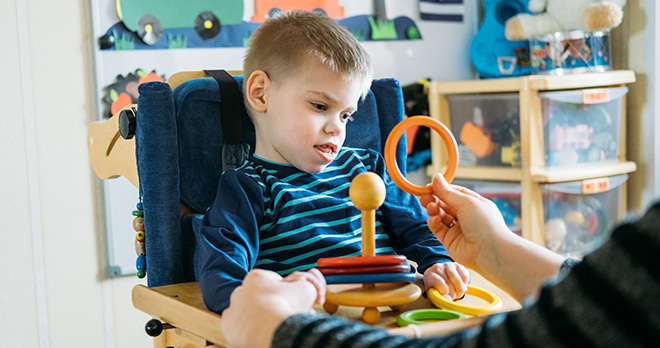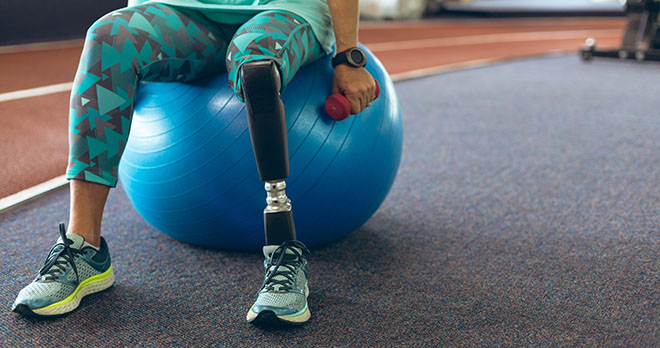In conversation with Professor Amin, Consultant Paediatric Neurologist at Bristol Royal Hospital for Children

Bristol provides a centre of excellence for children with cerebral palsy; Bristol Royal Hospital for Children providing support throughout the Southwest and beyond. Professor Amin, a consultant at the hospital, specialises in looking after children with cerebral palsy, often as a result of complex birth trauma.
Can you tell us a bit more about cerebral palsy and how it can impact on day-to-day life?
Cerebral palsy (CP) is a non-progressive neurological condition which affects movement and posture. It also causes epilepsy, movement disorders (dystonia and spasticity), global developmental delay, speech impairment, learning difficulties, visual impairment and feeding difficulties. CP is caused by an insult to the growing central nervous system before birth, around the time of delivery and up to two years of age. The insult can be traumatic, hypoxic, infective or genetic in origin.
The prevalence of CP is 2.11 per 1000 children in the general population. Up to 60% of them suffer from epilepsy. A large number suffer from movement disorders such as dystonia and spasticity.
Spasticity is a condition whereby muscles are tighter than they should be. This muscle tightness can stop individuals from doing everyday tasks such as holding a cup, walking and sometimes even talking. Muscle tightness can cause pain in some individuals, and in others make getting dressed very hard as their limbs won’t bend to put on clothing.
Dystonia is a condition that causes sustained muscle contractions, triggering twisting and repetitive movements or unintended postures.
Unfortunately, there is no effective or specific treatment for epilepsy, dystonia and/or spasticity in this population. There have been no well conducted clinical trials to address these issues. Conventional anti-seizure and anti-dystonic medications have been used to treat epilepsy and dystonia, but these drugs have not been systematically assessed.
How can cerebral palsy be treated?
-
Baclofen
In Bristol, we treat children with Baclofen, a medicine that causes the muscles to relax. It can be given enterally (i.e. taken by mouth or via a gastrostomy or a jejunostomy tube) or by the intrathecal route. Intrathecal baclofen is introduced directly into the space around the spinal cord. This is done via a pump that is permanently implanted inside the abdomen, during an operation. The pump has a tube that goes to the spinal cord.
Intrathecal infusion pumps have been used in Europe, the US and UK for the continuous administration of medications since the 1980’s. The Medtronic Synchromed II intrathecal pump is a fully implantable pump for administration of continuous medications such as baclofen. Continuous pump administered intrathecal baclofen is delivered into the intrathecal space (the fluid-filled space between the thin layers of tissue covering the brain and spinal cord) using a catheter and an infusion pump. The pump is usually implanted in the abdominal cavity and is well covered underneath the top layers of the abdominal surface; other areas may be used if this is not appropriate. The pump allows a continual controlled dose of baclofen, adjusted according to the child’s need, to be administered.
-
Deep Brain Stimulation
We also treat children with Dystonia with Deep Brain Stimulation (DBS).
Deep Brain Stimulation is a neurosurgical procedure involving the placement of a medical device called a neurostimulator into a specific area of the brain.
The neurostimulator has two thin electrodes that transmit small electrical impulses into a targeted area. A pacemaker-type device (which can also be thought of as a battery) is implanted in the upper chest or abdomen. This has very fine wires that travel up the neck and pass beneath the scalp into the brain. The pacemaker sends signals through the wires to a specific area of the brain. The stimulation helps to regulate the abnormal impulses of the brain, to control the symptoms of abnormal movements and postures.
The aim of this treatment is to reduce abnormal posturing and movements to reduce pain, prevent or manage deformity, promote active movement, improve quality of life and ease caregiving.
-
Selective Dorsal Rhizotomy Surgery
We also provide Selective Dorsal Rhizotomy, which involves surgery to the lower back to minimise spasticity. The procedure is performed under general anaesthesia and takes around four to five hours.
The sensory nerve rootlets that contribute most to spasticity are divided. Most children tolerate the procedure well. We generally consider children aged between three to nine years for this procedure, with a diagnosis of spastic diplegia, following premature birth.
There is now enough evidence to demonstrate that SDR is associated with long-term benefits. These are not only related to a reduction in spasticity, but also relate to improved movement, gait and quality of life for both children and their families.
What makes Bristol stand out as a centre of excellence in the treatment of cerebral Palsy?
In Bristol, we manage hundreds of patients with cerebral palsy who suffer from spasticity, dystonia and epilepsy and are resident in Bristol.
As a tertiary and quaternary service, the Bristol Children’s Hospital also provides support to patients who live throughout the South–West including Gloucester, Bath, Weston-Super-Mare, Taunton, Exeter, Yeovil, Plymouth, Barnstaple and Truro.
Occasionally we manage some patients outside our region. We are the only neurosciences centre in the UK providing comprehensive surgical and medical tone management.
Contact our enquiries team to find out more about how our claims specialists can help people living in Bristol.
Call today






